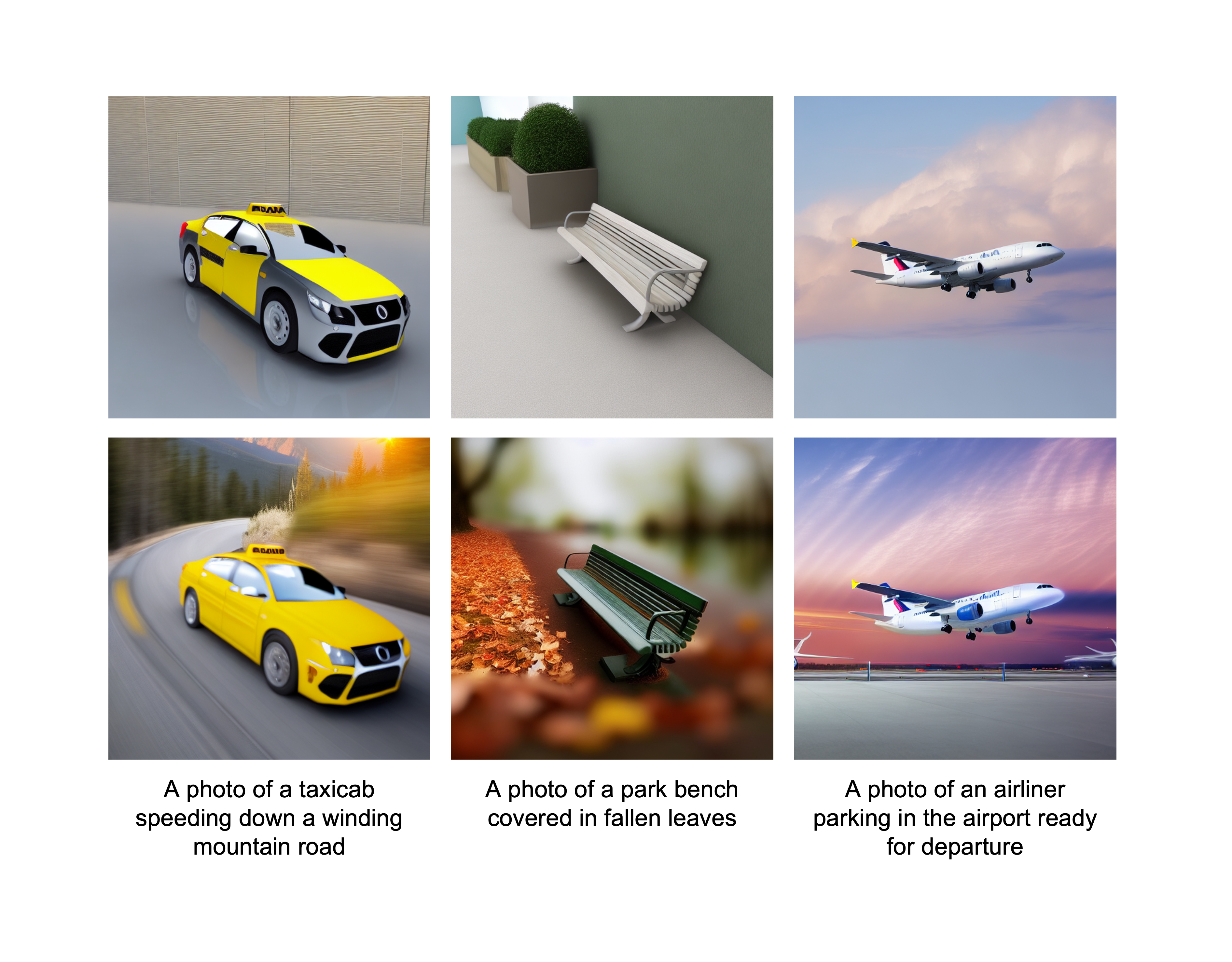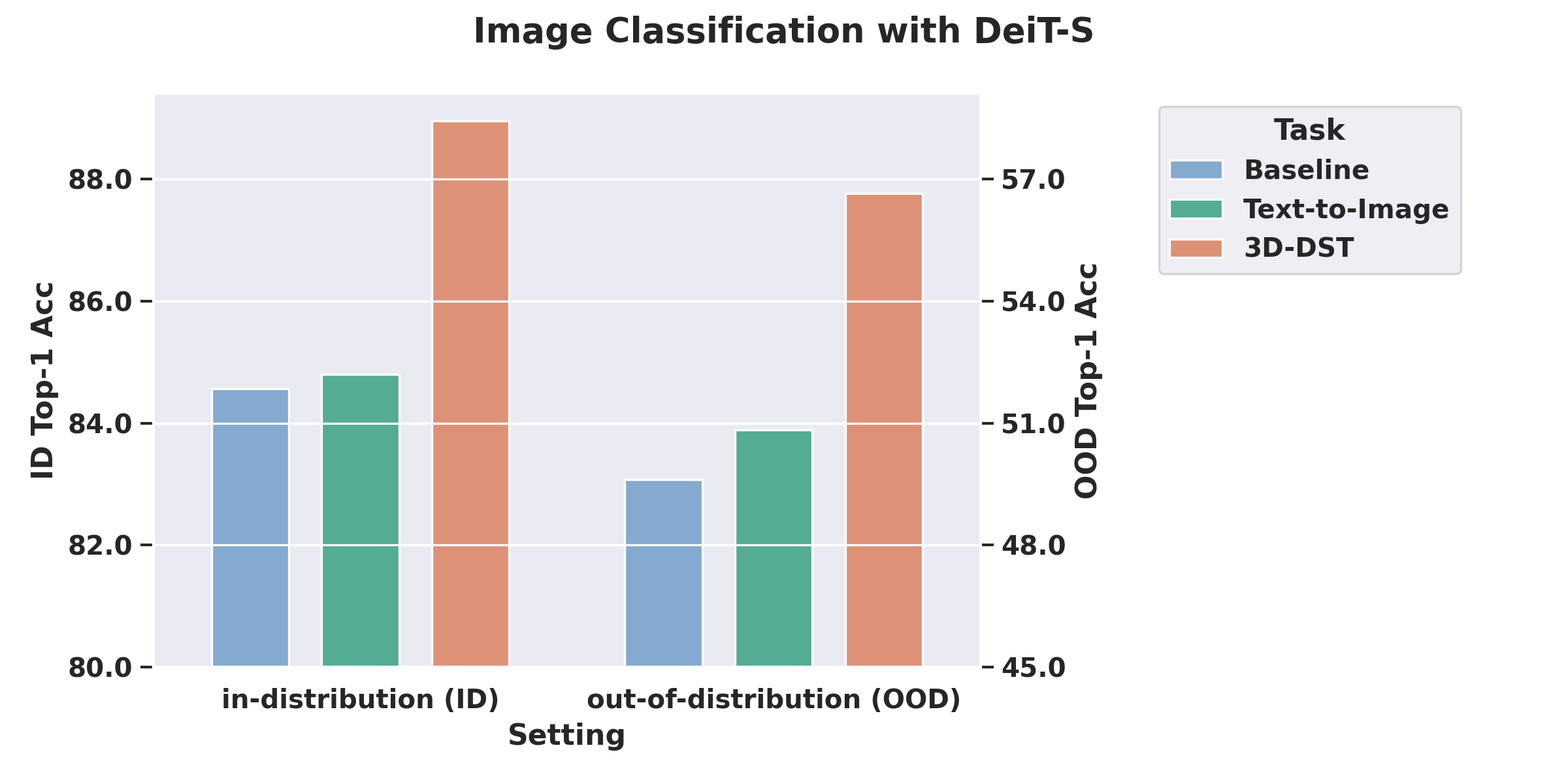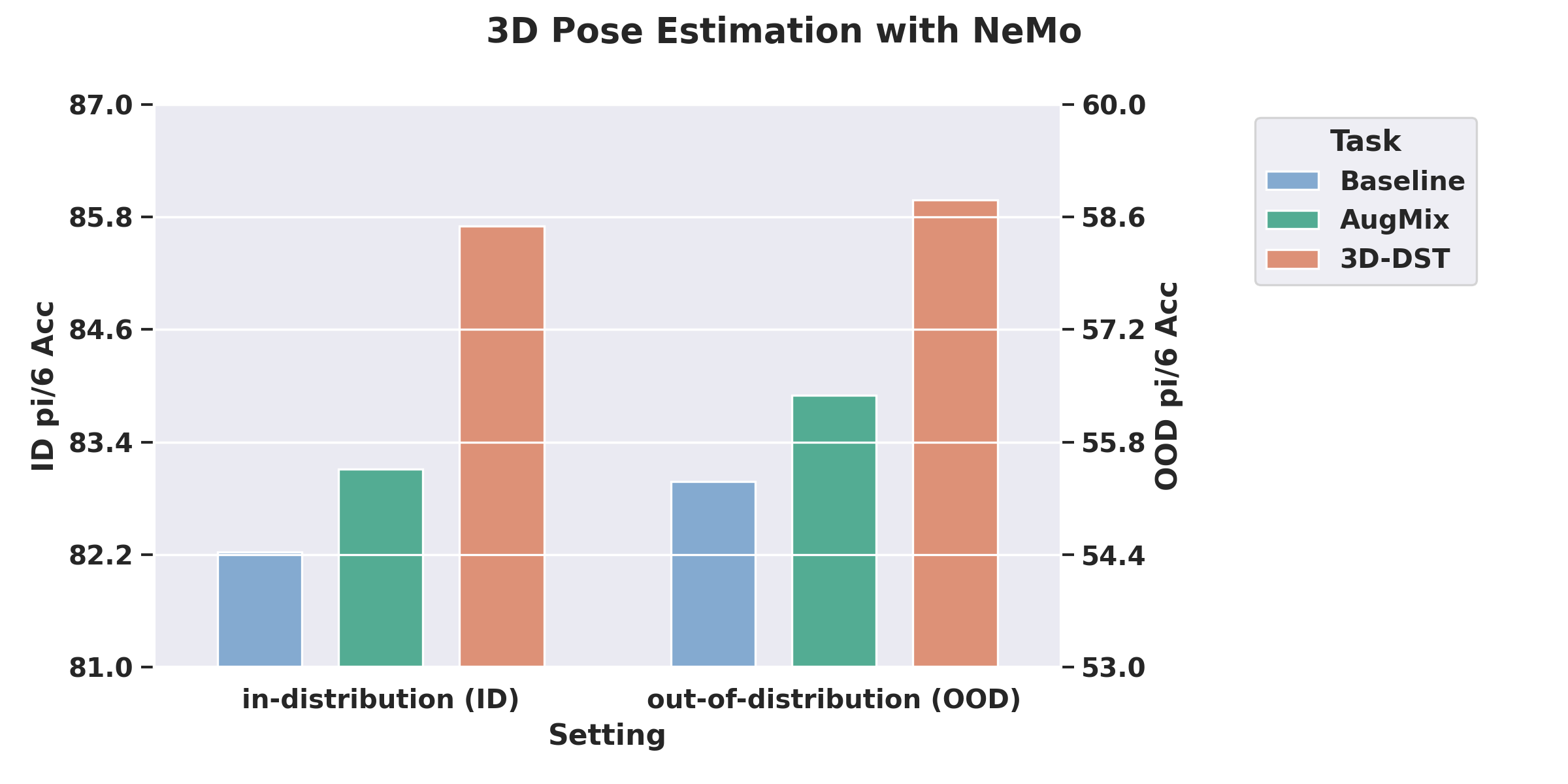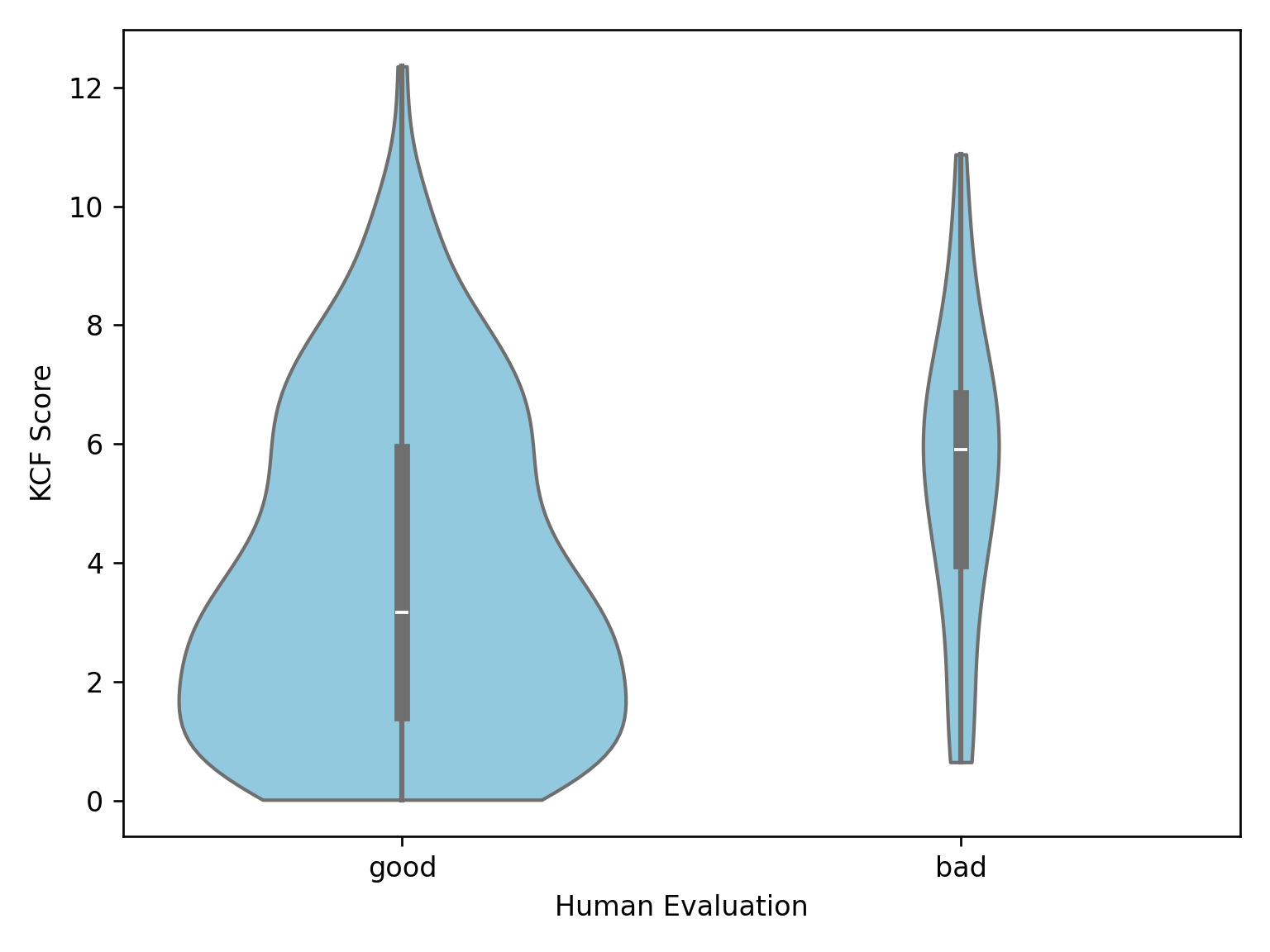We present 3D Diffusion Style Transfer (3D-DST), a simple and effective approach to incorporate 3D geometry control into diffusion models. Our method exploits ControlNet, which extends diffusion models by using visual prompts in addition to text prompts. We generate images of the 3D objects taken from 3D shape repositories, e.g., ShapeNet and Objaverse, render them from a variety of poses and viewing directions, compute the edge maps of the rendered images, and use these edge maps as visual prompts to generate realistic images. With explicit 3D geometry control, we can easily change the 3D structures of the objects in the generated images and obtain ground-truth 3D annotations automatically.
Our 3D-DST comprises three essential steps:
Image generation. We generate photo-realistic images with 3D visual and text prompts using Stable Diffusion and ControlNet.

We present a novel strategy for text prompt generation. We from the initial text prompt by combining the class names of objects with the associated tags or keywords of the CAD models. This helps to specify fine-grained information that are not available in standard class prompts, e.g., subtypes of vehicles beyond “An image of a car”. Then we improve the diversity and richness of the text prompts by utilizing the text completion capabilities of LLMs.
Results show that our method not only produces images with higher realism and diversity but also effectively improve the OOD robustness of models pretrained on our 3D-DST data.

We show that models pretrained on our 3D-DST data achieves improvements on both ID and OOD test set for image classification (on ImageNet-100 and ImageNet-R) and 3D pose estimation (on PASCAL3D+ and OOD-CV).


We collect feedback from human evaluators on the quality of our 3D-DST images and carefully analyze the failure cases of our generation pipeline. We identify a limitation of our model to be images with challenging and uncommon viewpoints (e.g., looking at cars from below or guitars from the side).
We further develop a K-fold consistency filter (KCF) to automatically remove failed images based on the predictions of an ensemble model. We find that KCF improves the ratio of correct samples, despite falsely removing a certain amount of good images.

We further develop a K-fold consistency filter (KCF) to automatically remove failed images based on the predictions of an ensemble model. We find that KCF improves the ratio of correct samples, despite falsely removing a certain amount of good images.
Here we present some preliminary results showing that KCF can improve the ratio of good images by around 5%. Our KCF serves as a proof-of-concept to remove synthetic images with inconsistent 3D formulations. KCF is still limited in many ways and we note that detecting and removing failed samples in diffusion-generated datasets is still a challenging problem.

Besides code to reproduce our data generation pipeline, we also release the following data to support other research projects in the community:
* denotes equal contribution
corresponding author
Please cite our paper if it is helpful to your work:
@inproceedings{Ma2024DST,
title={Generating Images with 3D Annotations Using Diffusion Models},
author={Wufei Ma and Qihao Liu and Jiahao Wang and Angtian Wang and Xiaoding Yuan and Yi Zhang and Zihao Xiao and Guofeng Zhang and Beijia Lu and Ruxiao Duan and Yongrui Qi and Adam Kortylewski and Yaoyao Liu and Alan Yuille},
booktitle={The Twelfth International Conference on Learning Representations},
year={2024},
url={https://openreview.net/forum?id=XlkN11Xj6J}
}
Copyright © 2024 Johns Hopkins University